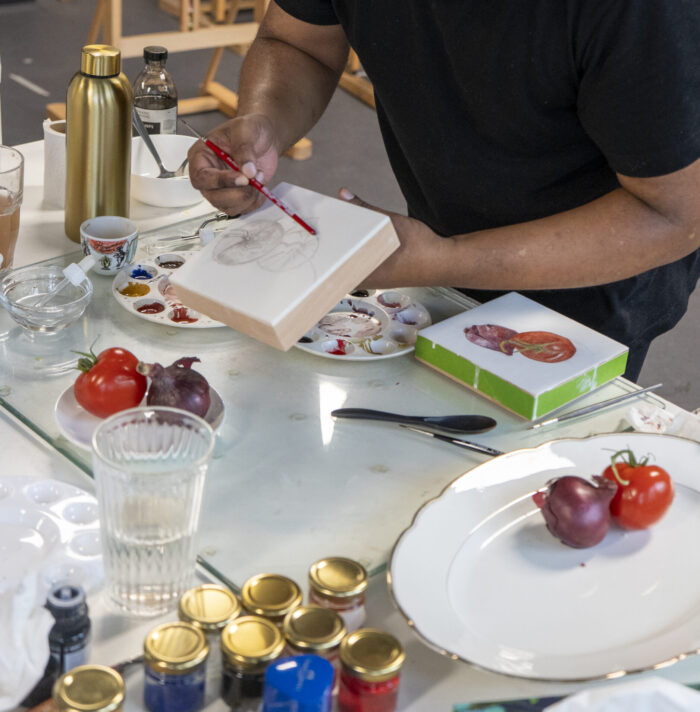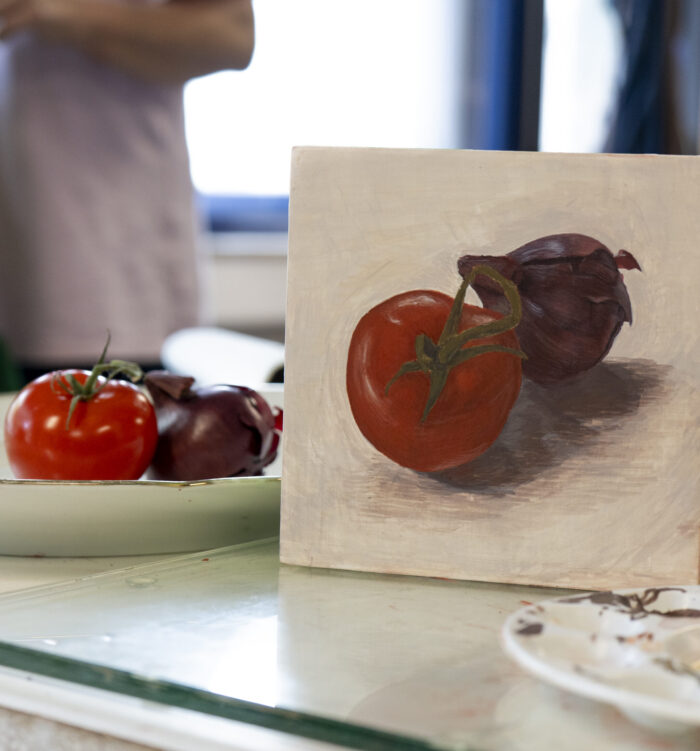In times of digital art, one of the oldest painting techniques worldwide is experiencing a remarkable renaissance: Egg Tempera.
In this article, you can learn all about how to mix Egg Tempera Paint yourself and what materials you need.
What is Egg Tempera?
Egg Tempera is a painting technique in which pigments are mixed with egg yolk as a binder. The result is an exceptionally brilliant and matte paint that develops impressive depth and durability. Famous Masterworks like Botticelli’s “Birth of Venus” (1485–1486) and most other paintings of Renaissance masters were made using this amazing technique.
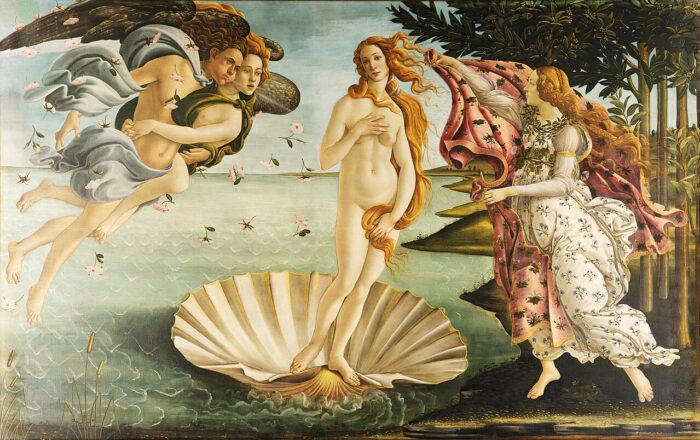
What You Need…
…For the Painting Surface:
- Sturdy wooden body
- Rabbit Skin Glue
- (Pulverized) chalk
- Fine sandpaper
- Broad brushes
…For the Paint:
- Dry color pigments
- Fresh eggs (only yolk)
- Distilled Water
- Vinegar essence
- Glass plate
- Glass muller
- Small jars with lids
- Small brushes
Step 1: Preparing the Surface
Prepping the Wood
First you need a sturdy wood body – either a panel or a canvas with a wooden frame is ideal. Sand the surface until it’s completely flat and smooth. Then remove any dust with a soft towel.
Making the Gesso Primer
For the gesso primer, combine equal parts of warm Rabbit Skin Glue and chalk. Mix this together until you’ve created a homogeneous, creamy mass with a spreadable but not too thin consistency.
(You can also skip this step by buying the gesso primer at an art supply store or online.)
Applying the Primer
Here’s where the art of patience begins: Apply the primer in four to six thin layers.
Tip: Alternate the direction of the brushstrokes each time to get an even surface.
Before adding another layer, make sure to let the others dry up completely. It’s also helpful to sand the surface lightly between every layer to create a smooth, absorbent ground that allows the paint to adhere properly.
Step 2: Preparing the Pigments
Mixing the Pigments
In order to prepare the pigments, use a glass muller to grind up the dry color pigments on a glass plate together with a few drops of water. Be careful not to add too much water, or your paint will end up too watery.
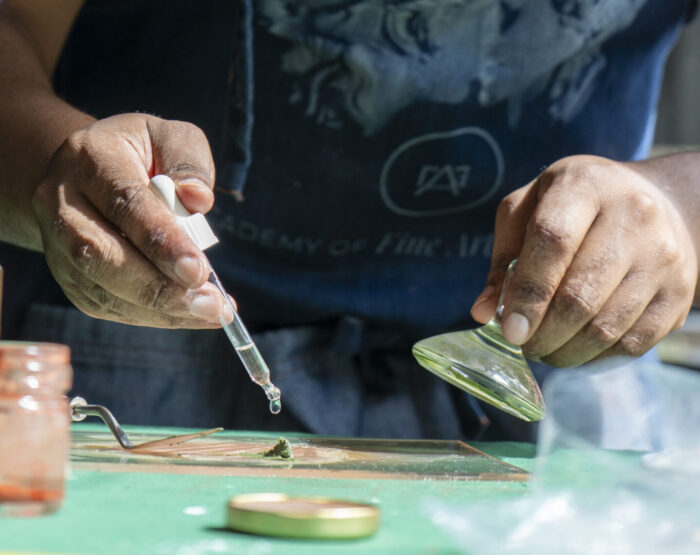
Tip: Really take your time for this step. The pigment has to be mixed thoroughly in systematic, circular motions for it to get to a smooth, lump-free, creamy consistency.
Storing the Pigments
Transfer the paste into small jars filled with distilled water to store them. The pigment quickly settles to the bottom, remaining usable without drying out. This step makes the painting process smoother and eliminates the need to remix pigment while working. Also, make sure to label the jars so you can differentiate them later.
Step 3: Creating the Paint Binder
Separating the Egg Yolk
Carefully split the egg yolk from the egg white. You can do this by cracking the egg open and sliding the yolk back and forth between the shells until it’s completely separated.
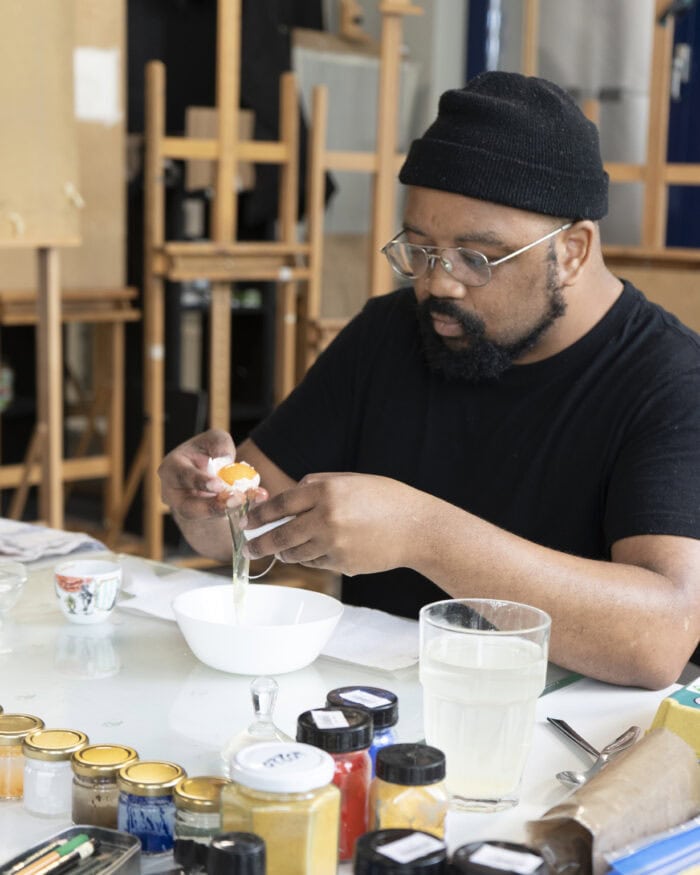
Removing the Membrane
The egg yolk is surrounded by a thin, transparent membrane, which has to be removed. Hold the yolk between your thumb and pointer finger and poke it – the yolk will run out, leaving the membrane between your fingers.
Creating the Emulsion
Mix the yolk with a few drops of water and add a drop of vinegar essence. This helps to preserve the emulsion for a longer period of time.
Step 4: Mixing the Paint and Painting
The Big Finale
The final paint is created by mixing the settled pigment with the egg yolk binder – typically in a 1:1 ratio, depending on the desired consistency. If you add more pigment, the paint will be more opaque and if you add more binder, the paint will be more transparent.
The First Brushstrokes
Now’s finally come the magic moment: Your DIY Egg Tempera Paint is ready! The paint dries up rather quickly, so you have to work fast. Only mix as much paint as you need in the next 20-30 minutes.
Once dry, the Egg Tempera paint remains highly lightfast and retains its luminosity for many years.
While making your own Egg Tempera Paint is time consuming, it’s quite rewarding. Every step along the process is tied to the century-long traditional craftsmanship and leads to results of extraordinary quality. Your efforts are rewarded with colors, which are incomparably brilliant and durable.
If egg tempera has sparked your curiosity, you might enjoy exploring these related articles and offerings:
Priming Correctly When Working with Oil Paintings
